Fish Springs National Wildlife Refuge Via Simpson Springs
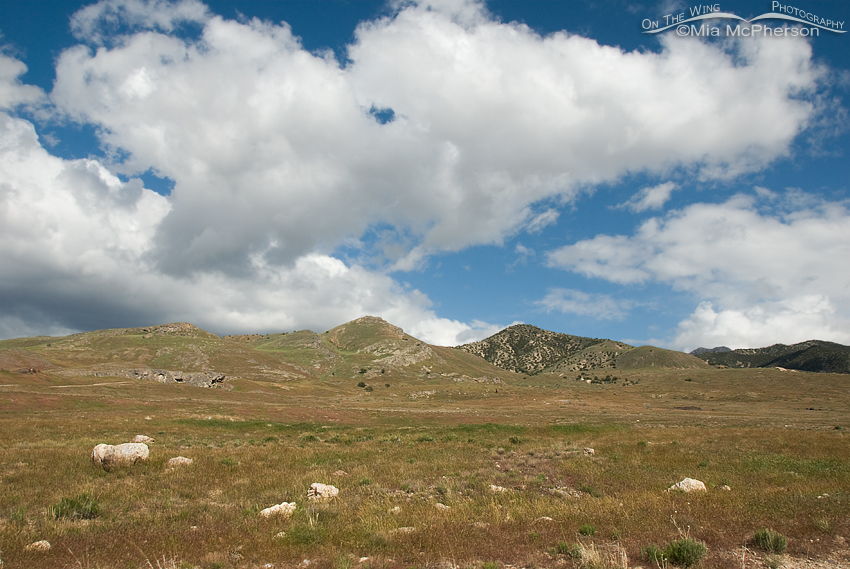 Billowing clouds above Simpson Springs – Nikon D200, f13, 1/320, ISO 250, +0.7 EV, Nikkor 18-200mm VR at 18mm, natural light
Billowing clouds above Simpson Springs – Nikon D200, f13, 1/320, ISO 250, +0.7 EV, Nikkor 18-200mm VR at 18mm, natural light
I headed out to the west desert of Utah earlier this week to camp at Simpson Springs and journey from there to Fish Springs National Wildlife Refuge, a spring-fed oasis for the wildlife in the area and as I soon found out it is also an oasis for the heart of this woman.
I’m fairly familiar with Simpson Springs having been there a few times and I always love the journey to it. Simpson Springs is named after Captain J. H. Simpson who stopped there in 1858 when he was looking for a mail route from Salt Lake City to California. There was a dependable supply of fresh water from the springs there and it would later become a mail station location No. 87 for the Pony Express and the Overland Express. The Pony Express was only in operation from April 3, 1860 until October 24, 1861.
In the 1930’s the Civilian Conservation Corps created a camp there, probably because of the availability of a reliable water source which is crucial in the West Desert for people and animals. There are about 20 campsites there going up a hill. We picked the uppermost campsite because of the spectacular views of the valley below and the Simpson Range of mountains above.
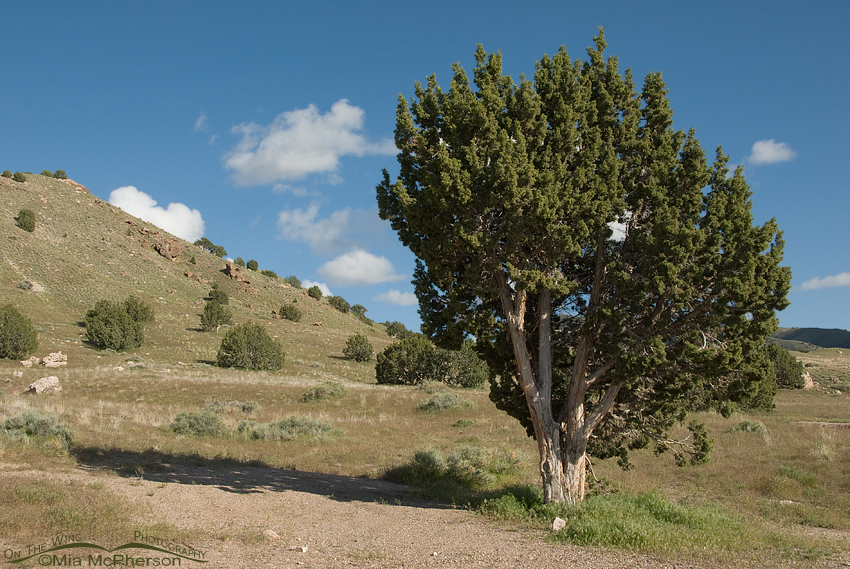 View above the Simpson Springs campground – Nikon D200, f13, 1/320, ISO 250, Nikkor 18-200mm VR at 24 mm, natural light
View above the Simpson Springs campground – Nikon D200, f13, 1/320, ISO 250, Nikkor 18-200mm VR at 24 mm, natural light
The campground is very peaceful and I relaxed as soon as we made camp. It was too late to head towards Fish Springs NWR so we did some exploring around the Simpson Springs area and turned onto some rough roads to see what was there. I would not advise anyone without 4-wheel drive to attempt those smaller roads.
I could see a few Pronghorn in the distance but no where near close enough to photograph. The morning had been cool and the sun had warmed up the desert nicely by the afternoon. One of those side roads took us high over the valley and the view was beautiful.
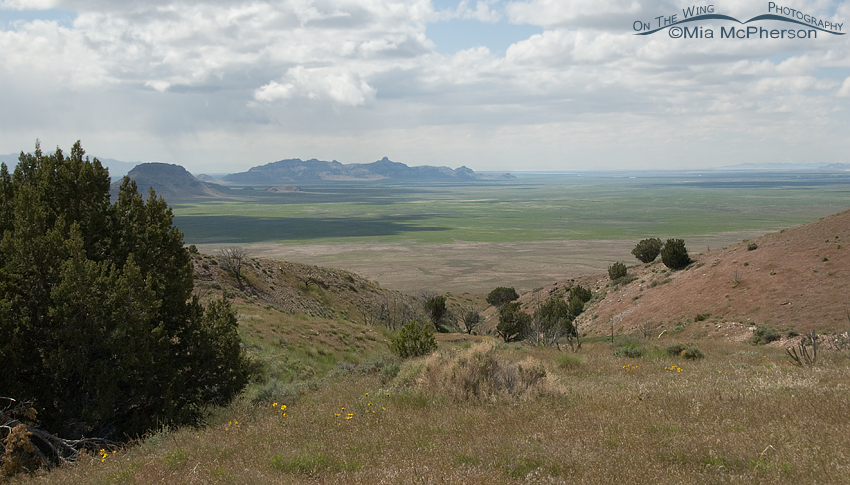 High above Simpson Springs – Nikon D200, f13, 1/500, ISO 250, Nikkor 18-200mm VR at 32mm, natural light
High above Simpson Springs – Nikon D200, f13, 1/500, ISO 250, Nikkor 18-200mm VR at 32mm, natural light
There were billowy clouds that created interesting shadows on the valley below and several kinds of wildflowers were blooming including one of my favorites, the Indian Paintbrush. There are not many tall trees in the area, the most obvious are the Junipers, twisted by the elements with a pungent aroma. The warm, gentle breeze felt great. There were quite a few warblers flitting about but none of them held still long enough to get pictures of them, they are such tiny dynamos.
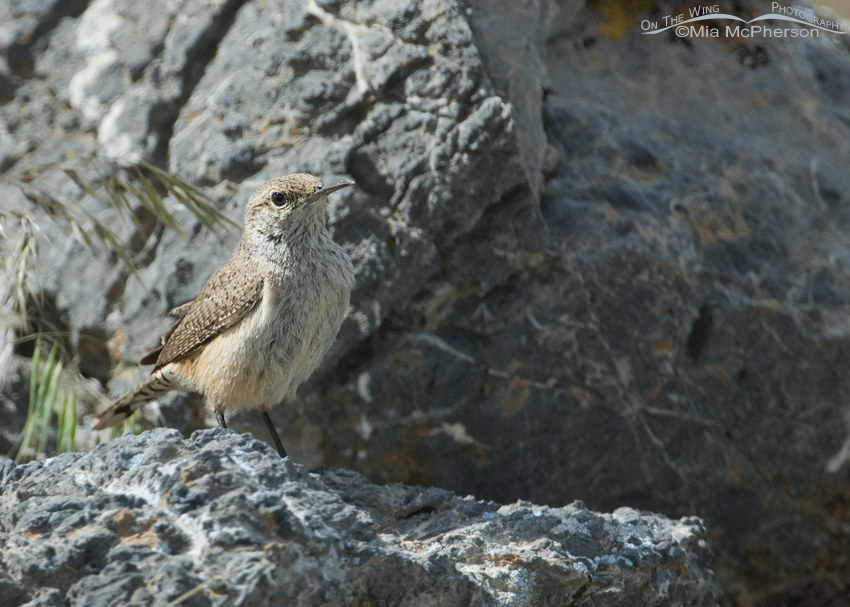 Rock Wren (Salpinctes obsoletus) near Simpson Springs – Nikon D200, f6.3, 1/1000, ISO 400, +0.3 EV, Nikkor 200-400mm VR with 1.4x TC at 306mm, natural light
Rock Wren (Salpinctes obsoletus) near Simpson Springs – Nikon D200, f6.3, 1/1000, ISO 400, +0.3 EV, Nikkor 200-400mm VR with 1.4x TC at 306mm, natural light
The second side road that we drove up was a bit rougher than the previous one but we found two interesting things there. I heard a familiar sound and followed the sound with my eyes and as a result I spotted a Rock Wren foraging in some rocks in the grass. The wren moved very quickly and I didn’t have the best light but I really enjoyed watching it and taking some photos.
Further up on a cliff wall I found a Common Raven’s nest built into a crevice. The adult Ravens were nearby though I couldn’t see any chicks in the nest. The ravens might be on their second brood by now.
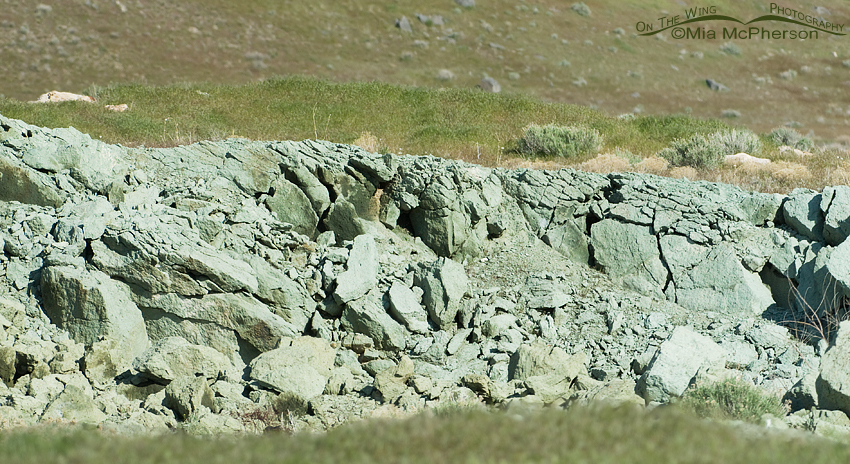 Green Volcanic Tuff seen in the Simpson Springs area – Nikon D200, f6.3, 1/1500, ISO 400, +0.3 EV, Nikkor 200-400mm VR with 1.4x TC at 200mm, natural light
Green Volcanic Tuff seen in the Simpson Springs area – Nikon D200, f6.3, 1/1500, ISO 400, +0.3 EV, Nikkor 200-400mm VR with 1.4x TC at 200mm, natural light
Later on we took another side road down into the valley which swung south on the west side of the reconstructed Pony Express Station. Looking east on that road you can see where there are heaps of green rock, those rocks are porous volcanic tuff. I read yesterday while researching it that the rock was mined at one time and used for decorative rocks in fish aquariums. Pretty interesting stuff that tuff!
Back at the campground I decided to take a short walk higher up on the Simpson Range behind our campsite. My camera gear and tripod are quite heavy, especially when walking uphill so I decided to go up without it but suspected I would be sorry that I did. I was right and was sorry I left it behind because there were warblers in the junipers close to where I stood and above me a Red-tailed Hawk circled in the updraft from the mountains. I admit I was pretty mad at myself for not at least carrying a camera with my 70-300mm VR attached. Live and learn.
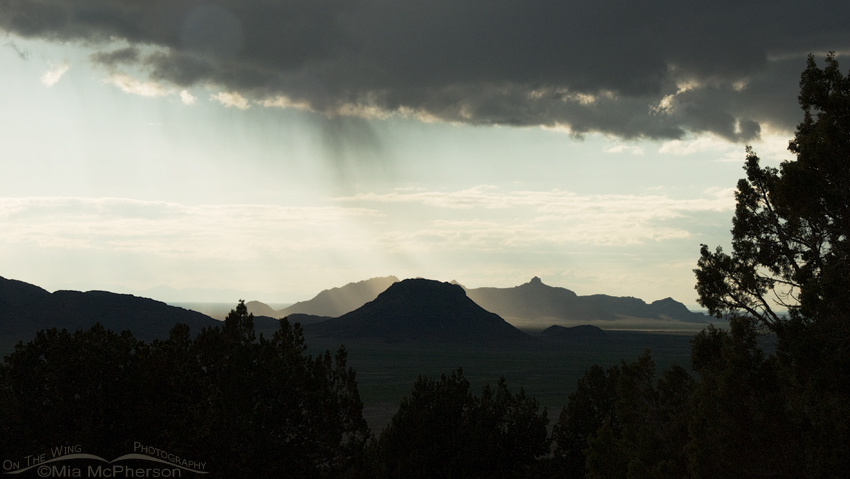 Stormy skies with virga over the valley from the campsite at Simpson Springs – Nikon D200, f13, 1/1000, ISO 250, +0.7 EV, Nikkor 18-200mm VR at 60mm, natural light
Stormy skies with virga over the valley from the campsite at Simpson Springs – Nikon D200, f13, 1/1000, ISO 250, +0.7 EV, Nikkor 18-200mm VR at 60mm, natural light
Before sunset some clouds rolled in that created interesting light patterns on the valley and the mountains to the west. I could see virga hanging down from the clouds in the distance. The dark clouds disappeared before sunset and soon after I fell asleep thinking about Fish Springs NWR.
Virga is any form of precipitation that doesn’t reach the ground.
On the road to Fish Springs National Wildlife Refuge
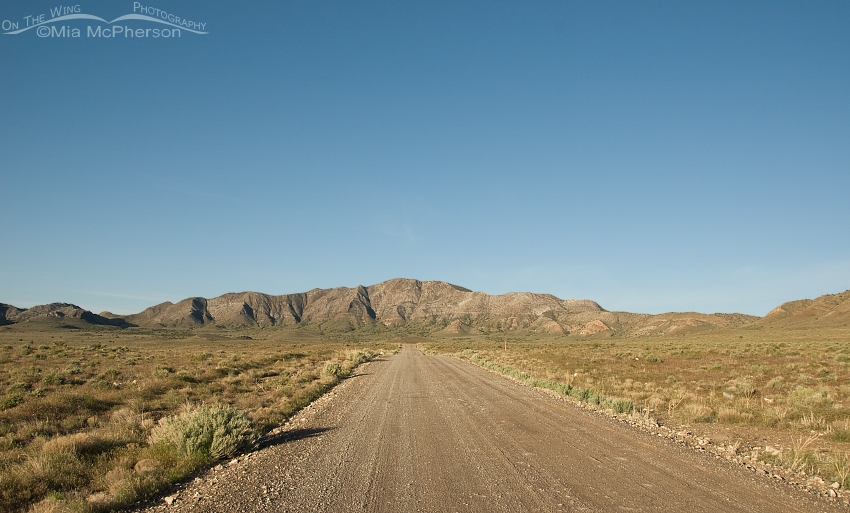 Road through the west desert of Utah on the way to Fish Springs NWR – Nikon D200, 1/400, ISO 250, +0.7 EV, Nikkor 18-200mm VR at 18mm, natural light
Road through the west desert of Utah on the way to Fish Springs NWR – Nikon D200, 1/400, ISO 250, +0.7 EV, Nikkor 18-200mm VR at 18mm, natural light
Morning arrived without a cloud in the sky and we headed towards Fish Springs NWR through some gorgeous country. I’ve heard other people say there is “nothing to see in the desert” but I have to disagree, I find the desert to be fascinating and there is an abundance of life that is well suited to the dry, harsh environment.
The geological history alone keeps my mind whirling and imagining what life here was like 500 thousand to a billion years ago. The area is all part of what used to be ancient Lake Bonneville and it was under water except for the highest peaks. There are areas where the benches (old shorelines) are quite visible. It is a 40 mile drive from Simpson Springs to Fish Springs all of which is on gravel roads. Be ready for the bumps.
 Mountains on the way to Fish Springs NWR – Nikon D200, f8, 1/350, ISO 250, +0.7 EV, Nikkor 18-200mm VR at 28mm, natural light
Mountains on the way to Fish Springs NWR – Nikon D200, f8, 1/350, ISO 250, +0.7 EV, Nikkor 18-200mm VR at 28mm, natural light
On the road I usually have my eyes scanning the area for birds and other wildlife yet I find myself musing often about how the mountains were formed, how old they are and what creatures lived here eons ago. I think about how quiet it is there compared to cities. When the vehicle is turned off you can hear the breeze rustling through the vegetation and that is about it.
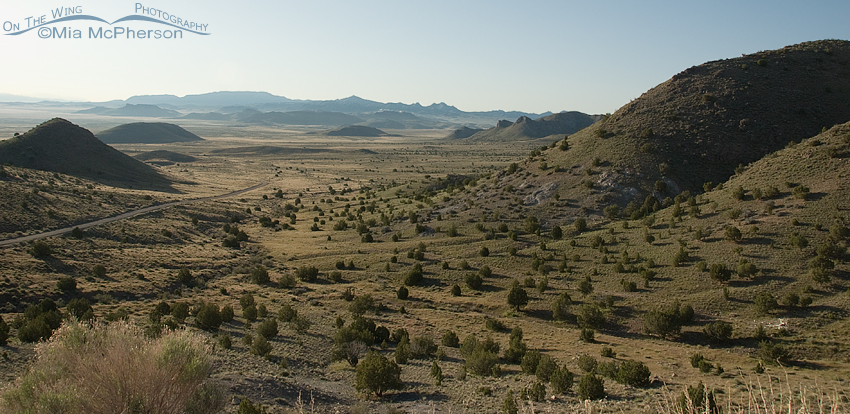 On the way to Fish Springs NWR looking east in the morning light – Nikon D200, f8, 1/500, ISO 250, +0.7 EV, Nikkor 18-200mm VR at 18mm, natural light
On the way to Fish Springs NWR looking east in the morning light – Nikon D200, f8, 1/500, ISO 250, +0.7 EV, Nikkor 18-200mm VR at 18mm, natural light
For me the journey to anywhere is as important as arriving at my destination. I appreciate the scenery along the way and want to etch the views into my mind as well as taking photographs of what I see. I feel that I never know if I will go to a certain place again and try to savor everything along the way.
Driving up a curving pass this view looking back towards Simpson Springs is one I won’t forget, the light, the curves, the plants and mountains delighted me.
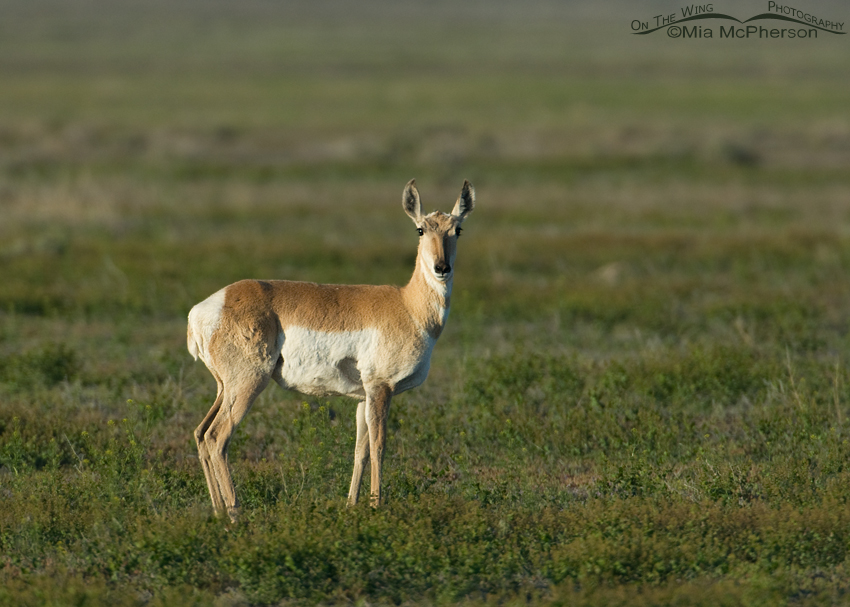 Adult Pronghorn doe in the vegetation – Nikon D200, f6.3, 1/640, ISO 400, Nikkor 200-400mm VR with 1.4x TC at 400mm, natural light
Adult Pronghorn doe in the vegetation – Nikon D200, f6.3, 1/640, ISO 400, Nikkor 200-400mm VR with 1.4x TC at 400mm, natural light
I didn’t see nearly as many Pronghorn as I thought that I might, it shouldn’t surprise me though because of the vast area that the Pronghorns have to wander through in the West Desert, most of which is not fenced and doesn’t hinder them from meandering anywhere they desire. This doe stood still long enough for me to stop and take photos of her in the early morning light.
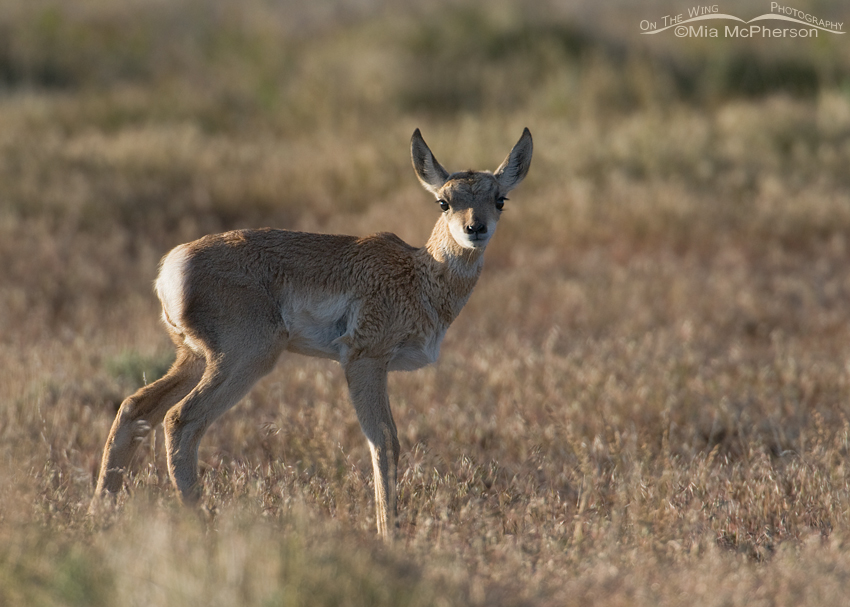 Pronghorn fawn on the West Desert – Nikon D200, f6.3, 1/500, ISO 400, Nikkor 200-400mm VR with 1.4x TC at 400mm, natural light
Pronghorn fawn on the West Desert – Nikon D200, f6.3, 1/500, ISO 400, Nikkor 200-400mm VR with 1.4x TC at 400mm, natural light
Not long after I saw the doe above we came across two fawns with the doe off in a distance. One of the fawns took off running while the other stood still then lowered its head with its rump raised. It was kind of comical, thoroughly interesting the see the behavior and endearing all at the same time.
I think that young pronghorn are the most gorgeous of animal babies in the world (other than human babies) because of their huge dark eyes, long eye lashes and innocent gazes. I wouldn’t do it but I just want to pick them up and hug them. I do wish this one had positioned itself in better light to show off all of its stunning beauty. I had a hard time getting the exposure right and not blowing out the whites of its rump.
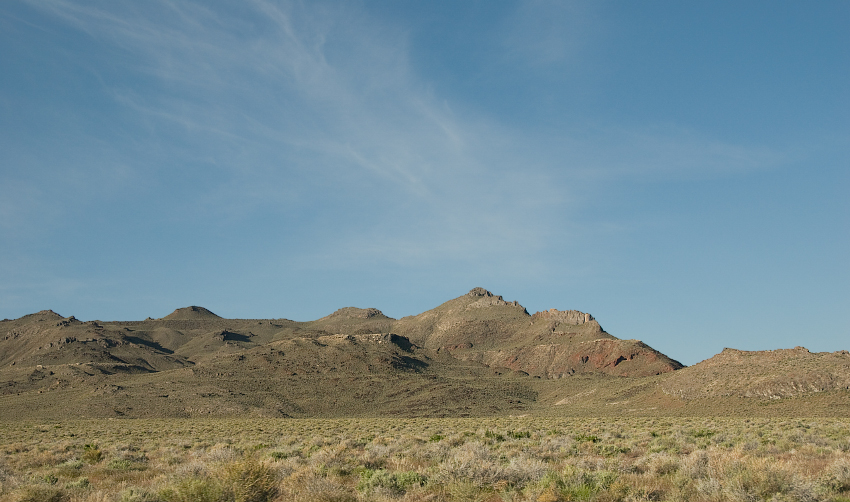 Wispy clouds heading to Fish Springs NWR – Nikon D200, f8, 1/800, ISO 250, Nikkor 18-200mm VR at 38mm, natural light
Wispy clouds heading to Fish Springs NWR – Nikon D200, f8, 1/800, ISO 250, Nikkor 18-200mm VR at 38mm, natural light
I think I can count five benches on the mountains in this image, they are ancient shorelines that were created when the water level of Lake Bonneville lowered over time. Lots & lots of time. It really makes me feel tiny compared to the huge expanse of land and amazement for the millions of years it took for the landscape to look the way it does now.
Native Americans wandered this desert long before white man arrived, quite possibly the Paleo Archaic and Goshutes appreciated the desert as much as I do today for the beauty that is seen each direction you turn.
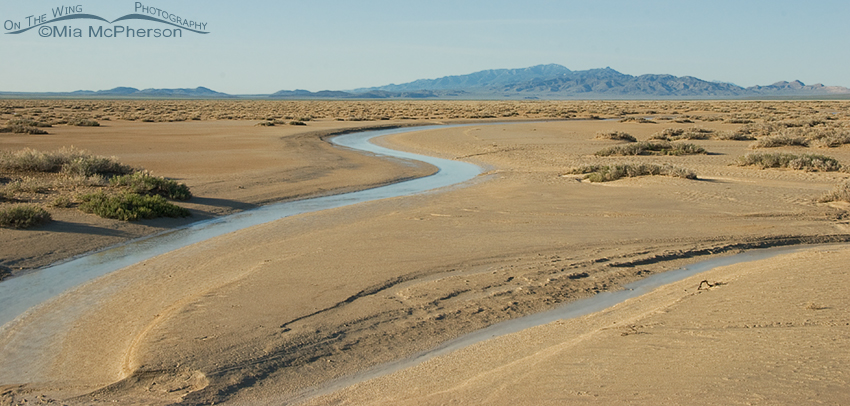 Almost to Fish Springs NWR Headquarters – Nikon D200, f18, 1/125, ISO 250, +0.7 EV, Nikon 18-200mm VR at 34mm, natural light
Almost to Fish Springs NWR Headquarters – Nikon D200, f18, 1/125, ISO 250, +0.7 EV, Nikon 18-200mm VR at 34mm, natural light
The soil and vegetation take on a different appearance the closer we got to Fish Springs. The soil appears finer grained and siltier while the shrubs are shorter and closer to the ground. Except for the water along the road in potholes and shallow ditches this is the first flowing water I saw along the way. It had been raining a lot in Utah for several weeks even out in the West Desert. I liked the lines of the curving water in this picture and had to stop to take photographs.
At the Fish Springs National Wildlife Refuge
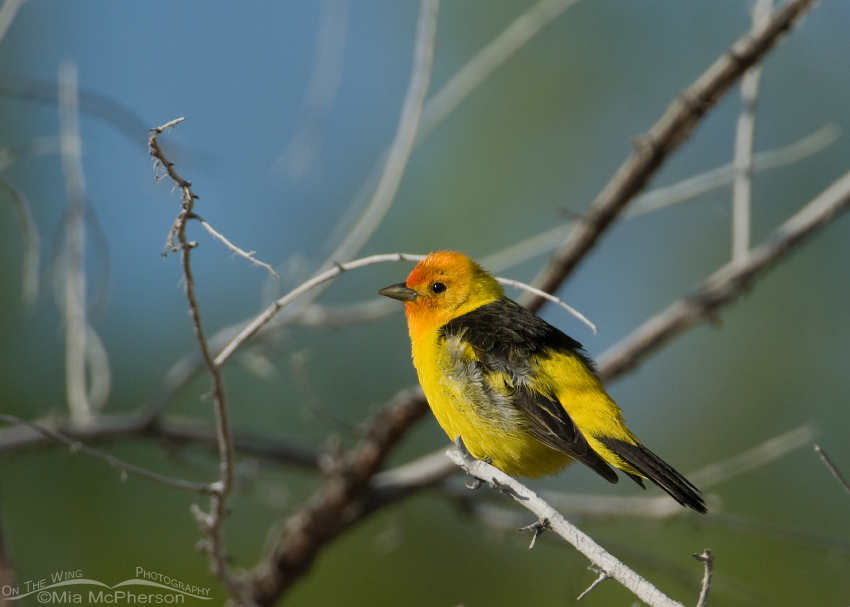 Western Tanager at Fish Springs NWR – Nikon D200, f6.3, 1/1250, ISO 400, +0.3 EV, Nikkor 200-400mm VR with 1.4x TC at 400mm, natural light
Western Tanager at Fish Springs NWR – Nikon D200, f6.3, 1/1250, ISO 400, +0.3 EV, Nikkor 200-400mm VR with 1.4x TC at 400mm, natural light
Around the refuge headquarters there are some taller trees and Russian Olives that appear to attract warblers and other perching birds. Near the headquarters I found this Western Tanager on a dead tree. With its lovely oranges, blacks and yellows it would be a difficult bird to misidentify. The abundant water in the refuge also helps to attract many species of birds.
An oasis in the West Desert
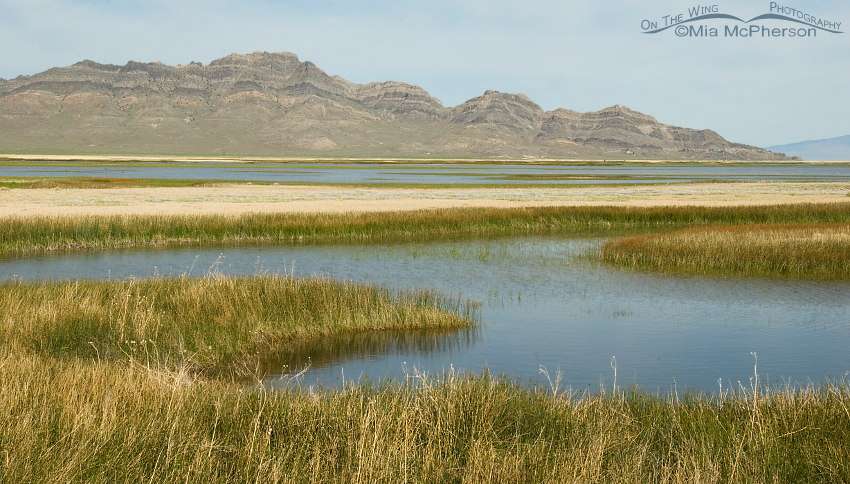 I can’t get enough of Fish Springs National Wildlife Refuge – Nikon D200, f22, 1/80, ISO 250, +0.7 EV, Nikkor 18-200mm VR at 40mm, natural light
I can’t get enough of Fish Springs National Wildlife Refuge – Nikon D200, f22, 1/80, ISO 250, +0.7 EV, Nikkor 18-200mm VR at 40mm, natural light
There are five major springs that supply the water for the refuge along with several lesser springs and seeps. There are ten thousand acres of marsh in the 17,992 acres of the refuge. This photo shows me looking west and the Fish Spring Range of mountains are in the background.
The final purchase and start of construction was in 1959. During the highest water level of old Lake Bonneville the present day marshes would be under 850 feet of water. I can’t even imagine that.
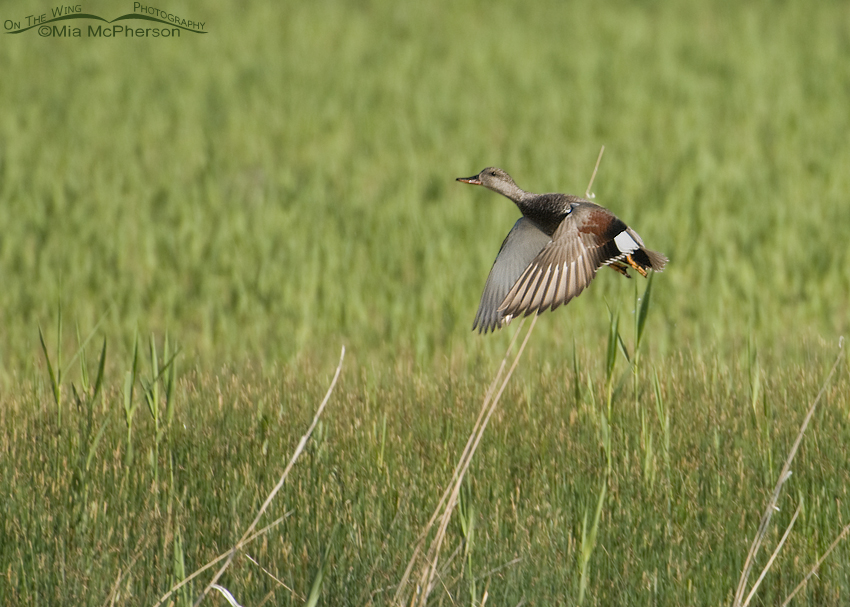 Gadwall lifting off from a marshy area of Fish Springs NWR – Nikon D200, f6.3, 1/800, ISO 400, +0.3 EV, Nikkor 200-400mm VR with 1.4x TC at 400mm, natural light
Gadwall lifting off from a marshy area of Fish Springs NWR – Nikon D200, f6.3, 1/800, ISO 400, +0.3 EV, Nikkor 200-400mm VR with 1.4x TC at 400mm, natural light
The marshes are excellent habitat for ducks, swans, geese, pelicans, swans, cormorants and shorebirds such as American Avocets and Phalaropes. There have been 277 species of birds that have been recorded since the refuge opened.
I heard frogs croaking but never did see one and them I also noticed some kind of whelk-like snails by the hundreds on some filamentous algae mats. I’m certain there is far more to be seen than meets the eye on a one day trip!
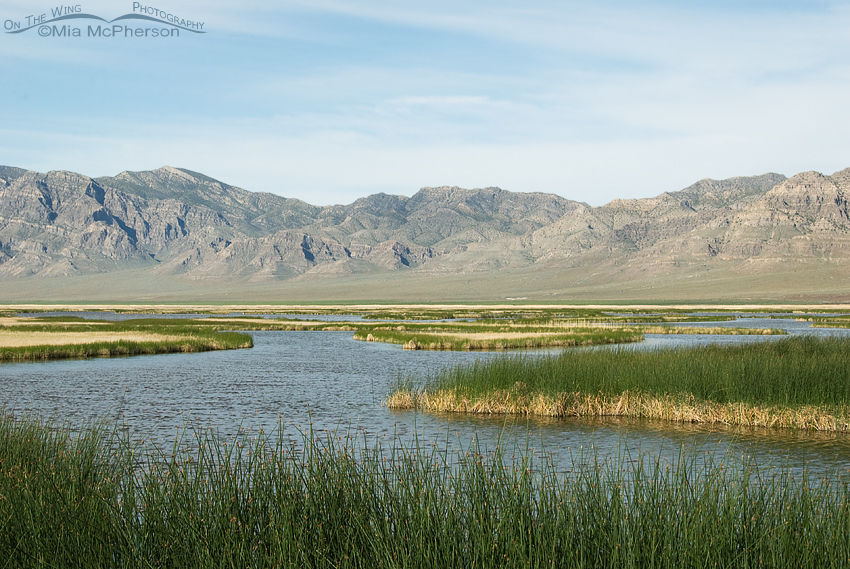 View of the marshes at Fish Springs NWR with the Fish Spring Mountain Range in the background – Nikon D200, f18, 1/100, ISO 250, +0.7 EV, Nikkor 18-200mm VR at 46mm, natural light
View of the marshes at Fish Springs NWR with the Fish Spring Mountain Range in the background – Nikon D200, f18, 1/100, ISO 250, +0.7 EV, Nikkor 18-200mm VR at 46mm, natural light
There were a few mosquitoes that bit me on the auto tour route so next time I visit I will spray insect repellent on at the headquarters.
The refuge isn’t crowded with people and photographers. There is a visitor sign in log when entering the refuge and the most recent visitors had signed in three days before us! We had the auto tour route to ourselves. I enjoyed that immensely because no one came along and scared the wildlife away.
I’m certain there are muskrats in the refuge though I did not see any because they love marshes. I did spot one lone coyote running across a dry area of the wetlands. It wasn’t close enough though to get any quality images.
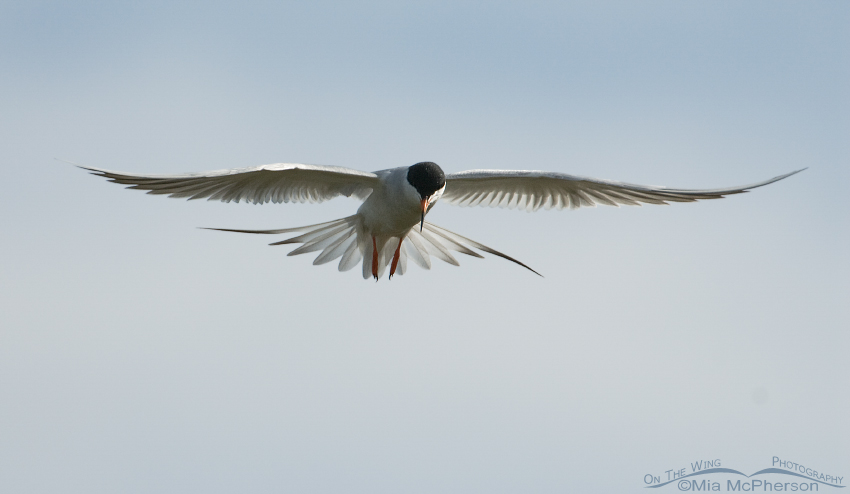 Forster’s Tern hovering over a marsh – Nikon D200, f6.3, 1/2000, ISO 400, +1.0 EV, Nikkor 200-400mm VR with 1.4x TC at 400mm, natural light
Forster’s Tern hovering over a marsh – Nikon D200, f6.3, 1/2000, ISO 400, +1.0 EV, Nikkor 200-400mm VR with 1.4x TC at 400mm, natural light
There were plenty of gulls to be seen in the marshes along with Forster’s and Caspian Terns hovering and flying overhead. Unfortunately we weren’t able to get a great angle of light with the Forster’s Terns we saw thus I did not get a catch light in the eye of the tern above. The terns would hover in flight and drop like rocks into the water when they spotted prey then rise up and flutter to get the water out of their feathers.
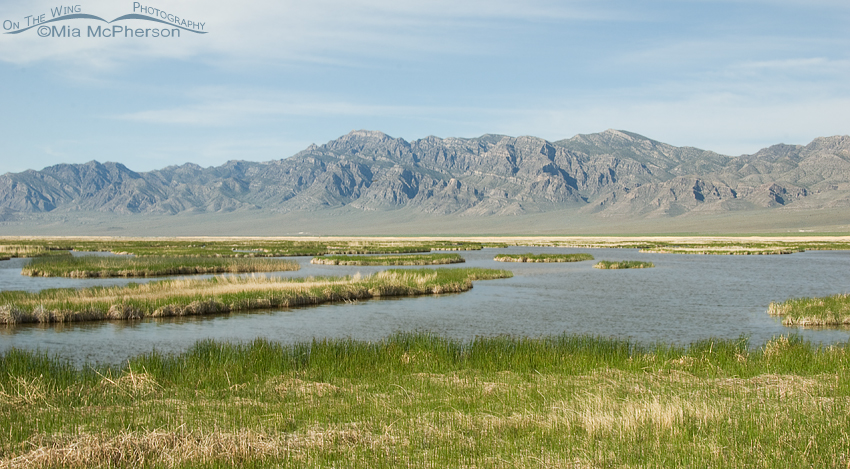 The marshes at Fish Springs are so beautiful – Nikon D200, f18, 1/60, ISO 250, +1.3, Nikkor 18-200mm VR at 34mm, natural light
The marshes at Fish Springs are so beautiful – Nikon D200, f18, 1/60, ISO 250, +1.3, Nikkor 18-200mm VR at 34mm, natural light
This oasis with its marshes, wetlands and the backdrop of the Fish Springs Range takes my breath away. I can easily see why people say they love it there. I would love to go back many times in different seasons just see to what it looks like and what birds are present. Part of the refuge auto tour route is closed to traffic after May 15 so that nesting birds in those locations are undisturbed, I think that ends in September but I am not absolutely certain.
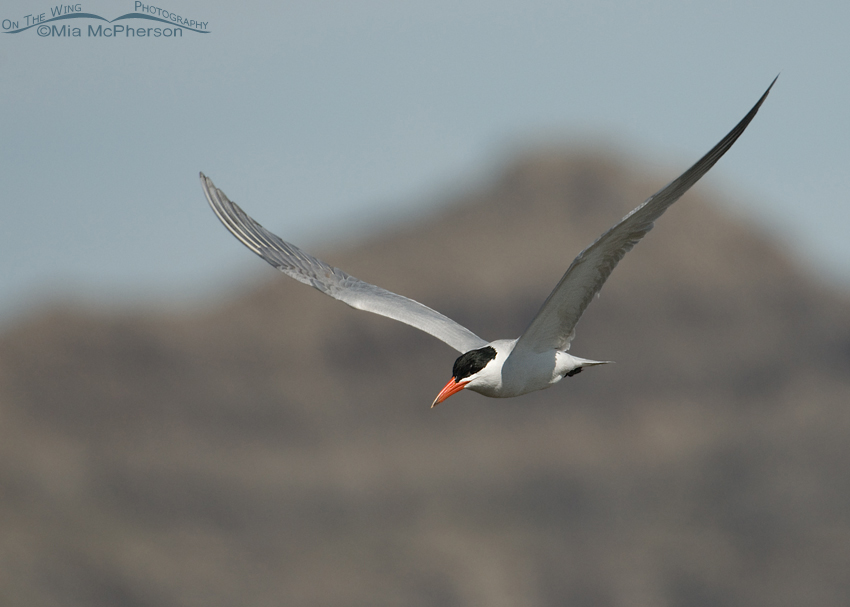 Caspian Tern in flight with the Fish Springs Mountain Range in the background – Nikon D200, f6.3, 1/2500, ISO 400, +1.0 EV, Nikkor 200-400mm VR with 1.4x TC at 400mm, natural light
Caspian Tern in flight with the Fish Springs Mountain Range in the background – Nikon D200, f6.3, 1/2500, ISO 400, +1.0 EV, Nikkor 200-400mm VR with 1.4x TC at 400mm, natural light
I have many images of terns along the Gulf Coast having lived in Florida before moving to Utah but not a single one of those has mountains in the background so I was very pleased when I was able to photograph Caspian Terns in flight with the Fish Springs Range as a back drop. I was also happy that I was at the right angle to get a catch light in the eye of this tern.
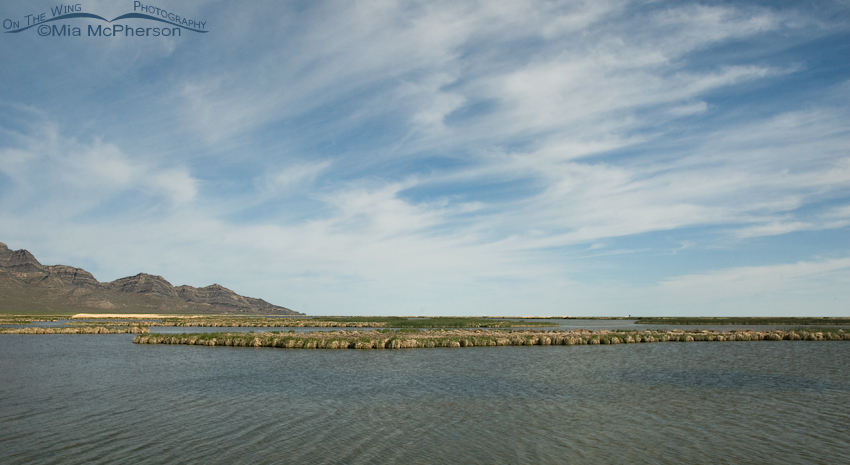 Dreamy Sky over Fish Springs NWR – Nikon D200, f18, 1/250, ISO 250, +0.7 EV, Nikkor 18-200mm VR at 18 mm, natural light
Dreamy Sky over Fish Springs NWR – Nikon D200, f18, 1/250, ISO 250, +0.7 EV, Nikkor 18-200mm VR at 18 mm, natural light
It was almost time to leave Fish Springs NWR for the day but I really hated to go. There is so much more there that I would like to explore. There were clouds moving in from the west and we still wanted to head west to the Deep Creek Mountains. You really don’t want to get stuck on some of those roads in a rain.
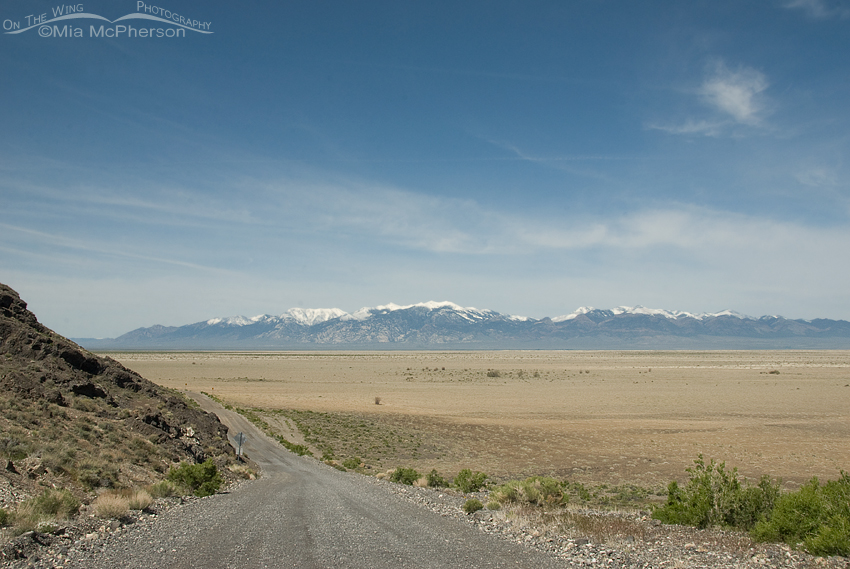 View of the Deep Creek Mountain Range west of Fish Springs NWR – Nikon D200, f18, 1/160, ISO 250, +1.3 EV, 18-200mm VR at 22mm, natural light
View of the Deep Creek Mountain Range west of Fish Springs NWR – Nikon D200, f18, 1/160, ISO 250, +1.3 EV, 18-200mm VR at 22mm, natural light
The Deep Creek Mountain Range truly impressed me by rising from an extremely flat base of land then soaring upwards with the highest peak at over 12,000 feet. It is almost June and the higher country in the mountain range is still covered in snow.
We drove to the small town of Callao and I do mean it is small. Not really a town with a grocery store or even a gas station, just houses and ranches.
On the way to the Deep Creeks I was reading the signs where the road split in two directions and momentarily stopped scanning the sky and surrounding country. I picked the wrong time to do that since I had missed a Golden Eagle that had been apparently perched high up on the rocks. I picked up the movement of the bird as it flew right into challenging light to get a decent shot. I did get the eagle landing on another rock with its wings and tail perfectly flared. A real shame though that the eagle was facing away from us. As I write this my bottom is still sore from the kicking I gave it.
Heading towards home
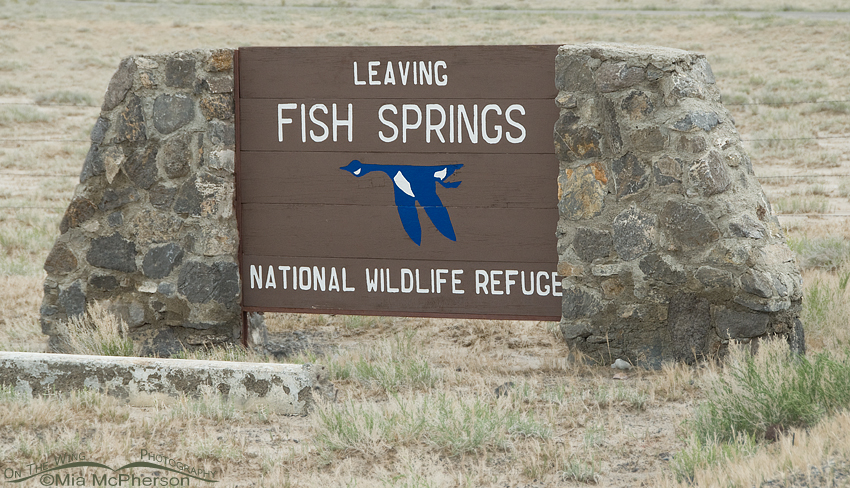 I hate to leave Fish Springs – Nikon D200, f8, 1/750, ISO 250, -0.3 EV, Nikkor 18-200mm VR at 105mm, natural light
I hate to leave Fish Springs – Nikon D200, f8, 1/750, ISO 250, -0.3 EV, Nikkor 18-200mm VR at 105mm, natural light
We passed through Fish Springs National Wildlife Refuge on the way back to Simpson Springs as the clouds above started the thicken and the light began to grow worse.
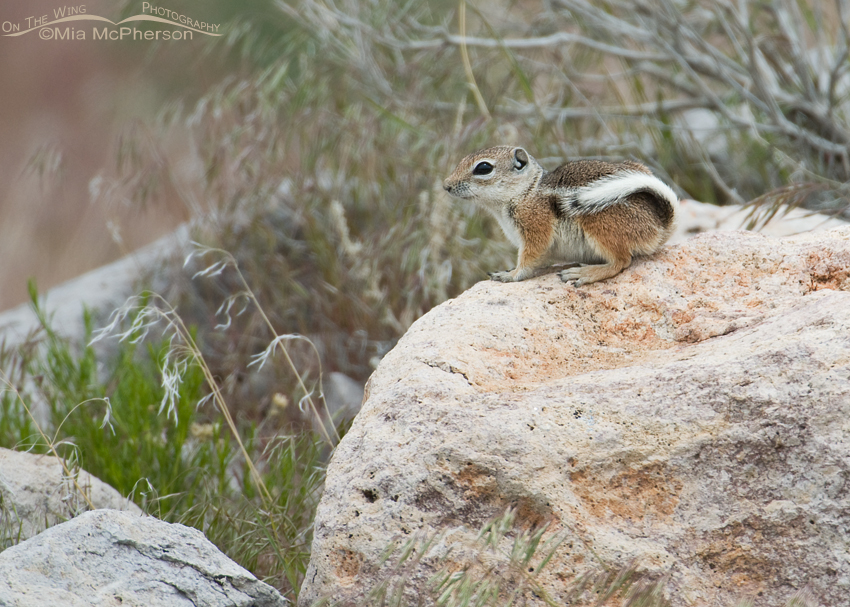 White-tailed Antelope Squirrel – Nikon D200, f6.3, 1/1000, ISO 400, +0.7, Nikkor 200-400mm VR with 1.4x TC at 400mm, natural light
White-tailed Antelope Squirrel – Nikon D200, f6.3, 1/1000, ISO 400, +0.7, Nikkor 200-400mm VR with 1.4x TC at 400mm, natural light
Fish Springs National Wildlife Refuge easily met and exceeded my expectations of a desert oasis. The lush marshes, open water and wildlife were entrancing plus the wide open sky and mountains adds to the charm. There is so much to see that a one day visit isn’t nearly enough. Fish Springs NWR is one of those places that will tug at my heart to visit again. It is indeed a treasure.
Mia
To view more of my photos taken at Fish Springs National Wildlife Refuge click here.


Mia, you should write for the Wildlife Refuge. Your insight, interpretation and pictures are pleasing and welcoming.
I see you like the “Looking down the road ahead” and “Down the road and around the bend” shots like I do…they really pull me onward…..Some call me “Detour” because of the effect these views have on me.
HOLY MOLY , Mia!!! What a wonderful trip you just took us on! Loved the images and the comments, was almost as good as being there…could even hear the wind stirring the brush and smell the warm earth..experience that big, big sky…feel the cool of cloud shadow. THANK YOU!!! I smiled at the idea of there being “nothing to see”…i have the exact opposite problem in the desert…there’s TOO MUCH to see and I get eye strain and almost headachy from visual overload, because there’s so much to see….and I want to see it all….
Thanks for the pictures. Me and my boys are heading that way next month and I’m really looking forward to it!
Not bad. So exactly what time of year did you go?
Hi James, thanks for stopping by my blog and for commenting. These images were taken at the end of May in 2011. I think I should have tried to be there in April for more birds. But just being out in nature makes me happy!
Thank you for sharing Mia. It’s been 3 years since I was at Fish Springs. Like you I thoroughly enjoyed the place, can’t wait to return. Care to join? Smiles
ps: you have an Amazing talent…..
Thanks for your very kind words about my photos Mark. Birds & nature are great subjects. I hope to see Fish Springs again next spring, during migration it must be totally awesome!
I wana go!
Your images are wonderful
Rohn, you just have to come down from Idaho and visit in the spring, I hear that spring is the best time to see Fish Springs!
This has inspired me. I think I might try to head out there next week…
Really enjoyed this post, and LOVE the pics! Very cool that you had the place to yourself, the scenery is lovely! That Pronghorn baby is way, way, way too cute!